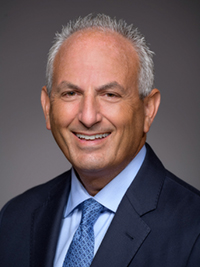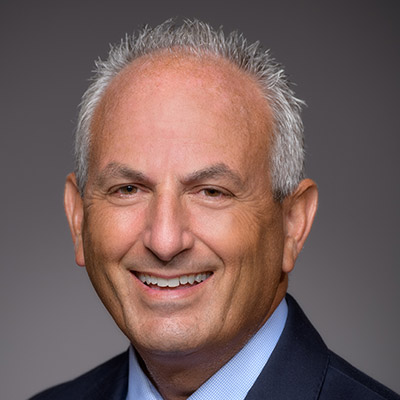The Shoulder Service at NewYork-Presbyterian/

Dr. William Levine
“Dr. Neer performed the first total shoulder replacement in 1974, but he was doing hemiarthroplasty as early as the 1940s and ‘50s,” says Dr. Levine. “Originally the replacements were done for shoulder fractures for which there were no other treatments. Dr. Neer then began performing them for shoulder arthritis. He recognized that a polyethylene socket led to the most reproducible outcomes for patients, which included pain relief and functional, quality-of-life improvements.”
According to Dr. Levine, Dr. Neer recognized that the weak link in the system was the plastic socket. “The weakness was evident in two forms,” says Dr. Levine. “One, the plastic socket could loosen, and two, it could wear away over time. Trying to improve the longevity and the durability of the plastic socket has been the holy grail for anatomic total shoulder replacement ever since. Over the years, surgeon innovators have tried everything possible to improve its stability and durability, usually leading to some form of metal enhancement – different types of metal, different styles of prostheses, complete metal backing with metal pegs, a total metal-backed glenoid that had thinner polyethylene – all of which led to early failure.”
Alliance Glenoid: A Hybrid of Both Metal and Plastic Components
Enter the Alliance™ Glenoid, the first anatomic glenoid system to offer standard and half-wedge augmented hybrid implant options to treat posterior erosion with minimal bone removal, which was FDA approved in 2019. “The Alliance Glenoid has a hybrid design with a metal-backed peg attached to the plastic socket that retains the same thickness, so it’s not too thin and does not wear out early,” says Dr. Levine, co-developer of the system that maximizes the benefits of both metal and plastic. “The design offers the advantages of a metal backing with the titanium central post and peripheral pegs, which are cemented in the traditional style. One of the most common reasons for total shoulder arthroplasty failure is glenoid loosening. Our hypothesis is that this hybrid design will have longer durability and longer stability without loosening. Early short-term studies by John Sperling and Tom Duquin have been demonstrated outstanding results.”

The Alliance Glenoid system has all polyethylene 3-peg, all polyethylene 4-peg, hybrid metal-peg, and hybrid-metal peg augment options allowing the surgeon to select the best prosthesis for each patient.
The fully convertible platform stem portfolio features micro, mini, standard, and revision lengths to allow for patient-specific selection. Infinite offset options provide the ability to accurately reproduce natural anatomy with a minimized gap stem and head design to allow the humeral head to sit virtually flush with the resection.
Clinical indications for the new system include:
- Non-inflammatory degenerative joint disease, including osteoarthritis and avascular necrosis
- Rheumatoid arthritis
- Correction of functional deformity
- Fractures of the proximal humerus, where other methods of treatment are deemed inadequate
- Difficult clinical management problems
According to Dr. Levine, the 10-year survivorship with previous prostheses is 88 to 90 percent. “However, reporting that the survivorship is 88 to 90 percent doesn’t tell the whole story,” says Dr. Levine. “Many patients have had a radiographically loose glenoid, but either the symptoms were not severe enough to warrant revision surgery or the patients don’t choose to have revision surgery even though they may be having some symptoms. We’re hoping that the Alliance Glenoid system will extend well beyond the 10-year timeframe.”
The Identity Humeral Prosthesis: Refining Reverse Shoulder Arthroplasty
Reverse shoulder arthroplasty was invented by Paul Grammont in the early 1980s. “Professor Grammont, an innovator and an engineer, initially tried a multitude of shoulder prostheses that didn’t work for the unsolved problem of stabilizing a shoulder that does not have a functioning rotator cuff,” says Dr. Levine. “Out of all those failures and misses came the transformational and disruptive technology, reverse shoulder replacement. Interestingly, it was France’s very well-kept secret and remained unknown to the rest of the world for some time.”
Released in North America in 2004, the reverse prosthesis became the fastest growing shoulder prosthesis and remains so to this day. “One of the challenges we’ve recognized, however, is that the anatomic replacement has a different type of humeral component position than the humeral component for a reverse shoulder replacement,” says Dr. Levine, who was part of the design team that set out to make some significant changes to the current design.
Dr. Levine and the Zimmer-Biomet design team sought to create a shorter stem than the traditional stem introduced by Dr. Neer and replicated around the world. “The stems were particularly long because the original design was meant to provide more stability for fractures,” he says. “Nonetheless, you have a humeral component that has been inserted for a non-reverse replacement, but that humeral component is not necessarily positioned correctly for reverse replacements.”
“Fast forward to a time when that glenoid becomes loose or that rotator cuff becomes incompetent,” says Dr. Levine. “Now you must revise that humeral component – and that entire shoulder from an anatomic replacement that has failed – to a reverse replacement. Even if the humeral component is well fixed, has good ingrowth into the local bone, is cemented perfectly, and is in good position but it needs to be revised to a reverse, you’re stuck. You would have to potentially destroy the proximal humerus just to get the humeral component out because it is in the wrong position relative to what you need for a reverse.”
Dr. Levine and his design team devised a humeral component that can be used for either anatomic or reverse shoulder arthroplasty. “Because of the height problem that we faced with converting failed humeral components from the anatomic to the reverse design, it has required some clever design features in how to bury the humeral component a little deeper in the anatomic situation. With the work of our engineers and many years in the laboratory, the Identity Humeral Prosthesis was born. We expect it to become commercially available in the next quarter.”
“Improving outcomes of patients with shoulder rotator cuff tears, instability, and other conditions that require shoulder reconstruction has always been a driving force behind our research efforts at Columbia,” says Dr. Levine. “When we can minimize pain, improve patient safety and outcomes, and increase durability of shoulder prostheses, there is no greater satisfaction than helping our patients return to optimal functioning and mobility.”




